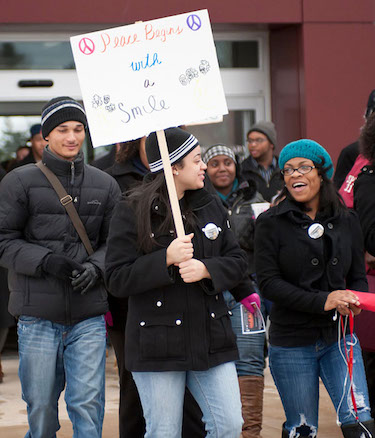General Education Director
820 Campus Drive,
ASC 2011,
Big Rapids, MI 49307
(231) 591-2823
[email protected]

Social/behavioral science methods, theories, principles, and application should make up at least 80% of the course content of Self and Society courses.
Ferris graduates actively engage in their society and recognize how they are shaped by the society and place in which they live.
Natural environments, social systems, and interpersonal relationships influence how people think, behave, and interact with others. An appreciation of these influences is essential for effectively participating in and changing society.
The observable activities or abilities that will be evaluated as evidence of student learning for this Core Competency are described below. The icons to the left of each outcome are linked to holistic scoring rubrics. A complete matrix of all 40 scoring rubrics is available on this page.